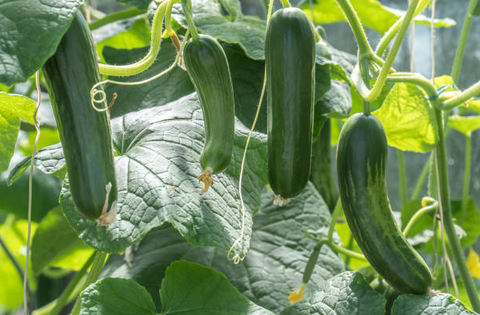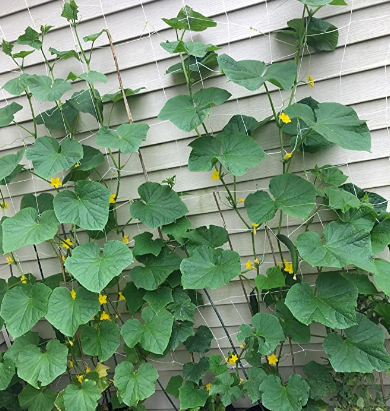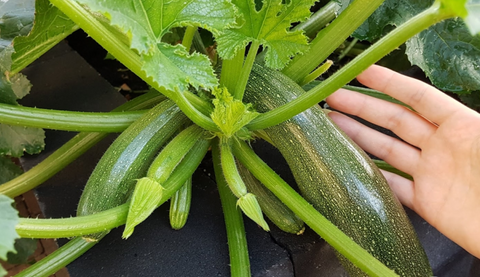Creeping phlox, with its cascading foliage and vibrant blooms, adds a touch of enchantment to any garden landscape. In this comprehensive guide, we will delve into the art of planting and nurturing this delightful groundcover to enhance the beauty of your outdoor space.The following content also has some reference value for raised garden beds.
What is Creeping Phlox?
Creeping phlox, scientifically known as Phlox subulata, is a herbaceous perennial native to North America. Its name, "creeping," aptly describes its growth habit, as it spreads low to the ground, forming dense mats of foliage. The slender, needle-like leaves provide a lush backdrop for the main attraction: the colorful flowers that adorn the plant in spring. These flowers come in a variety of shades, including pink, purple, blue, white, and bi-colors, adding a burst of color to garden beds, rock gardens, or slopes.
Choosing the Right Location
Before planting creeping phlox, it's essential to choose a suitable location that meets its specific requirements.
Sunlight Requirements
Creeping phlox thrives in full sun to partial shade, requiring at least six hours of sunlight per day for optimal growth and flowering. In areas with intense afternoon sun, partial shade can help protect the delicate blooms from scorching.
Soil Conditions
Well-drained soil is crucial for the health of creeping phlox. It prefers slightly acidic to neutral soil with good drainage to prevent waterlogging, which can lead to root rot. Amending heavy clay soil with organic matter such as compost or peat moss can improve soil structure and drainage.

Climate Considerations
Creeping phlox is adaptable to various climates but performs best in regions with mild temperatures. It can tolerate cold winters and hot summers, making it suitable for a wide range of growing zones. However, in areas with extreme heat or humidity, providing some afternoon shade can help protect the plants from stress.
Selecting Varieties
With a multitude of varieties available, selecting the right creeping phlox for your garden can be an exciting endeavor.
Color Variations
One of the most appealing aspects of creeping phlox is its wide range of colors. From soft pastels to vibrant jewel tones, there's a shade to suit every garden palette. Consider mixing and matching different colors to create eye-catching combinations or sticking to a monochromatic scheme for a more cohesive look.
Growth Habits
Creeping phlox varieties can vary in their growth habits, from low, spreading mats to more upright forms. Choose a growth habit that complements your garden design and fits the available space. Spreading varieties work well as groundcovers, while taller varieties can be used as border plants or focal points.
Flowering Seasons
While creeping phlox is primarily known for its spring blooms, some varieties may have a longer flowering season, extending into early summer. Selecting a mix of early, mid, and late-blooming varieties ensures continuous color and interest throughout the growing season, prolonging the beauty of your garden.
Preparing the Soil
Proper soil preparation is essential for the success of creeping phlox.
Soil Testing
Before planting, conduct a soil test to assess the pH and nutrient levels of your soil. Creeping phlox prefers slightly acidic to neutral soil with a pH range of 6.0 to 7.0. If necessary, amend the soil with lime to raise the pH or sulfur to lower it.
Soil Amendments
Incorporating organic matter such as compost, aged manure, or peat moss can improve soil fertility and structure, providing essential nutrients for healthy plant growth. Work the amendments into the soil to a depth of 6 to 8 inches to ensure they are evenly distributed.
Soil Drainage
Good soil drainage is critical for preventing waterlogged conditions, which can lead to root rot and other problems. If your soil has poor drainage, consider incorporating perlite or coarse sand to improve aeration and drainage.

Planting Process
Follow these steps for a successful planting process.
Timing
Plant creeping phlox in early spring after the last frost date or in early fall to allow the roots to establish before winter. Avoid planting during hot summer months, as this can stress the plants and impede establishment.
Spacing
Space creeping phlox plants 12 to 18 inches apart to allow for adequate spread and airflow. Proper spacing helps prevent overcrowding and reduces the risk of disease by promoting good air circulation around the plants.
Planting Depth
When planting creeping phlox, set the plants at the same depth they were growing in their containers. Gently loosen the roots and backfill the hole with soil, firming it gently around the plant. Water thoroughly to settle the soil and remove any air pockets around the roots.
Watering Needs
Proper watering is essential, especially during the establishment period.
Initial Watering
After planting, water creeping phlox thoroughly to settle the soil and encourage root establishment. Keep the soil evenly moist but not waterlogged during the first few weeks after planting.
Regular Watering Schedule
Once established, water creeping phlox regularly, especially during dry periods. Aim to provide about 1 inch of water per week, either through rainfall or supplemental irrigation, to keep the soil consistently moist.
Avoiding Overwatering
While it's essential to keep the soil moist, avoid overwatering creeping phlox, as excessive moisture can lead to root rot and other fungal diseases. Allow the soil to dry out slightly between waterings to prevent waterlogged conditions.
Mulching Techniques
Mulching helps conserve soil moisture, suppress weeds, and improve soil structure.
Benefits of Mulching
Mulching around creeping phlox plants provides insulation against temperature fluctuations, reduces water evaporation from the soil surface, and prevents soil erosion. Additionally, organic mulches break down over time, adding nutrients to the soil and improving its structure.
Mulch Types
Choose organic mulches such as shredded bark, compost, or pine needles for creeping phlox beds. These materials not only provide weed suppression and moisture retention but also contribute to the overall aesthetics of the garden.
Application Methods
Apply a 2- to 3-inch layer of mulch around creeping phlox plants, taking care to leave a small gap between the mulch and the plant stems. Mulching too close to the stems can trap moisture and promote rot, so maintain a slight distance to prevent issues.

Fertilizing Requirements
While creeping phlox is not a heavy feeder, occasional fertilization can promote healthy growth and abundant flowering.
Nutrient Needs
Apply a balanced, slow-release fertilizer in early spring when new growth appears. Look for a fertilizer with equal parts nitrogen, phosphorus, and potassium to provide essential nutrients without promoting excessive foliage growth.
Organic vs. Synthetic Fertilizers
Consider using organic fertilizers such as compost or fish emulsion for a more sustainable approach to feeding creeping phlox. Organic fertilizers release nutrients slowly over time and improve soil health, promoting long-term plant growth.
Frequency of Fertilization
Fertilize creeping phlox once a year in spring, following the manufacturer's recommendations for application rates. Avoid overfertilizing, as this can lead to nutrient imbalances and reduce flowering.
Pruning and Maintenance
Regular pruning and maintenance keep creeping phlox looking tidy and healthy.
Deadheading
Remove spent flowers promptly to encourage continuous blooming and prevent self-seeding. Snip off the faded blooms just above the nearest set of leaves using sharp scissors or pruning shears.
Trimming Overgrown Parts
Trim back any overgrown or leggy stems to promote bushy growth and maintain a compact form. Prune creeping phlox lightly after flowering to shape the plants and remove any dead or damaged foliage.
Weed Control
Keep the area around creeping phlox free from weeds to reduce competition for nutrients and moisture. Hand-pull weeds as soon as they appear, taking care not to disturb the shallow roots of the phlox plants.
Dealing with Pests and Diseases
While relatively resistant to pests and diseases, creeping phlox may encounter occasional problems.
Common Pests
Watch out for aphids, spider mites, and powdery mildew, which are the most common pests and diseases affecting creeping phlox. Use insecticidal soap or neem oil to control pests, and remove infected plant parts promptly to prevent the spread of disease.
Disease Prevention
Promote good air circulation around creeping phlox plants by spacing them adequately and avoiding overcrowding. Water at the base of the plants to keep the foliage dry and prevent fungal diseases.
Natural Remedies
Consider using natural remedies such as companion planting and beneficial insects to control pests and diseases in the garden. Plants like marigolds and lavender repel pests, while ladybugs and lacewings prey on aphids and other garden pests.
Propagation Methods
Expand your creeping phlox collection through simple propagation techniques.
Division
Divide mature creeping phlox plants every few years to rejuvenate them and create new plants. Dig up the clump in early spring or fall, and carefully separate the root mass into smaller sections. Replant the divisions immediately and water well to encourage root establishment.
Stem Cuttings
Take stem cuttings from healthy creeping phlox plants in early summer when the stems are actively growing. Remove a 4- to 6-inch stem cutting with a sharp knife, and remove the lower leaves. Dip the cut end in rooting hormone and plant it in a pot filled with moist potting mix. Keep the cutting in a warm, bright location until roots develop.
Seed Propagation
Collect seeds from mature creeping phlox plants after the flowers fade and the seed pods mature. Sow the seeds in trays or pots filled with seed-starting mix, and keep them moist until germination occurs. Transplant the seedlings into individual pots once they develop true leaves, and grow them on until they are ready for planting in the garden.
Enjoying the Beauty of Creeping Phlox
Once established, creeping phlox requires minimal care and rewards gardeners with its enduring beauty.
Incorporating into Garden Designs
Use creeping phlox as a groundcover in flower beds, rock gardens, or along pathways for a splash of color and texture. Combine it with other low-growing perennials and spring bulbs for a stunning floral display.
Seasonal Appeal
Enjoy the changing colors of creeping phlox throughout the seasons, from the early spring blooms to the lush green foliage in summer and the fiery hues of fall. Creeping phlox adds visual interest to the garden year-round.
Long-Term Care
Continue to provide regular maintenance, including watering, fertilizing, and pruning, to ensure the health and vigor of creeping phlox plants. With proper care, they will continue to thrive and enchant for years to come.
Conclusion
Creeping phlox is indeed a charming addition to any garden, offering beauty, versatility, and ease of care. By following the guidelines outlined in this article, you can successfully plant and grow this groundcover to enhance the allure of your outdoor space. Whether cascading over rocks, spilling down slopes, or edging garden beds, creeping phlox is sure to captivate with its charm and grace.









